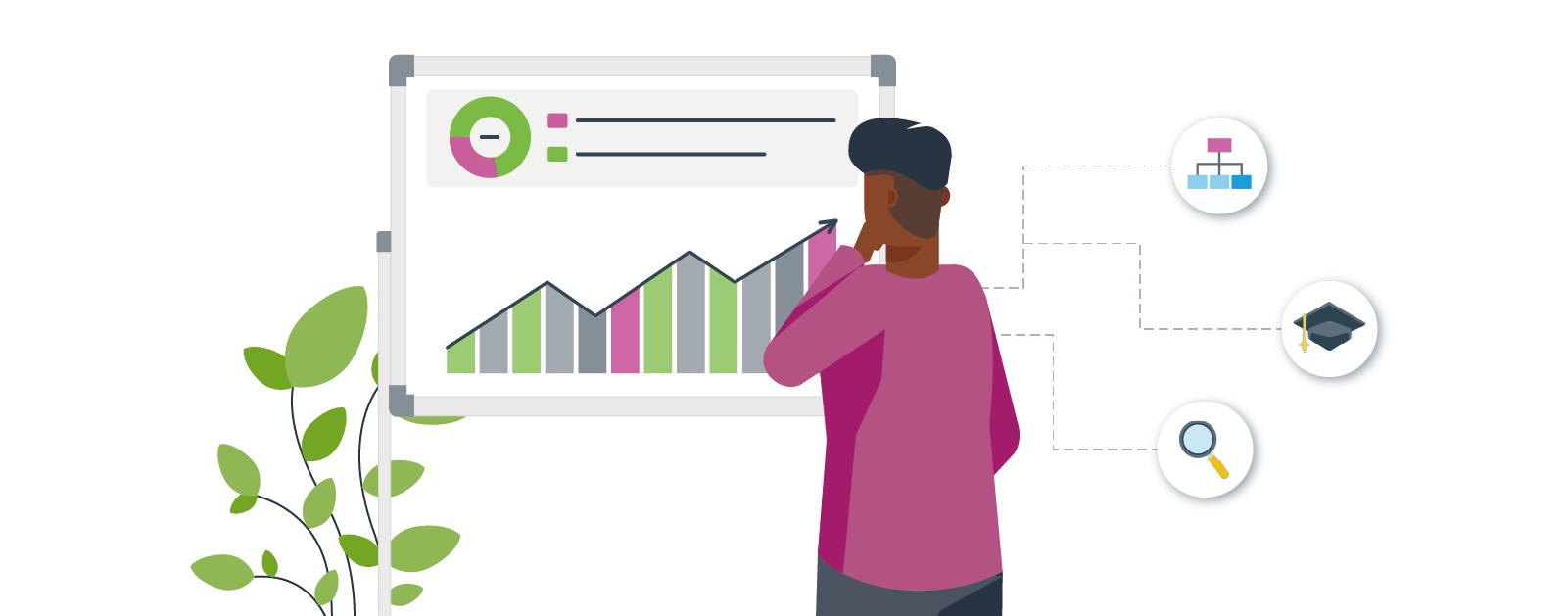Unless you are part of an industry that focuses heavily on statistics, you might find the phrase ‘data and analytics’ a little intimidating. We tend to associate data analytics with lots of complex numbers with inscrutable meanings - the realm of mathematicians and computer scientists, not the common man.
But believe it or not, data analytics is not as complicated a concept as you might initially think, and it can play a massive role in improving the inner workings of any organisation.
In simple terms, data analytics means using data to learn about certain aspects of your organisation. Today, many of the processes involved in analysing raw data have been automated, making the whole thing a lot easier for non-statisticians to utilise. The information gathered from data analytics can be interpreted to draw conclusions about your organisation, which you can then act on in order to improve.
This is the main reason why it is important for people within your organisation to know how to analyse and interpret data—it can tell you so much about your organisation that you may never have realised otherwise. Analysing data can show you what you need to do to optimise the performance of your organisation and make better business decisions... but merely having the data is not enough. To get the best results, you need people who are trained in using data.
The WEF predicts that ‘data and AI’ will create about 400,000 new jobs by 2022—people skilled in data analytics are in high demand. Tech companies have long since been on top of this race for data professionals, but for other businesses not well-accustomed to data analytics, demand for analysts is likely to vastly exceed the number of professionals available for hire. Thus, using a program to train the people in data analytics could be vital to closing the skill gap in your organisation and enabling you to properly utilise the data you have access to.
To do this effectively, you need to first consider what you need your staff to be able to do with data, and what skills they need to be trained in to accomplish their goals. Will they need deep, extensive technical skills, or just a surface-level knowledge that will allow them to form business strategies using the data they’ve interpreted? It’s important to determine the role of each team member first so that they can undergo the appropriate training that will allow them to perform that role well.
To do this, you need to establish the reason you want the data - there’s no point in gathering data for the sake of it. What is the purpose of the data you are collecting? What do you plan to use it for? To figure this out, it can help to understand the different types of data analytics. You can roughly group the different types of analytics into four categories:
#1: Descriptive:
The purpose of descriptive data analytics is, as you might suspect, to describe the situation. It’s probably the simplest of the types of analysis and is concerned primarily with establishing what the data implies about the reality of the situation. Descriptive analytics can tell you whether an organisation’s sales have gone down over the last quarter, whether a website has gotten over a certain number of views, and so on.
Although it’s simple, it’s hard to make well-informed decisions without first knowing what the reality is, and descriptive analytics is a good way to find out.
#2: Diagnostic:
Where description is all about what happened, diagnostics is all about figuring out why it happened. Perhaps your sales increased over the last year; what changed to make that happen? How can you keep that trend up?
Diagnostic analytics is a bit more complicated than descriptive analytics, though. You’ll likely need more than one data input and ways of interpreting correlations between them. Diagnostic analysis is incredibly useful for planning and management- if you understand why things are the way they are, it gives you the power to influence how things will look in the future.
#3: Predictive:
Speaking of the future, predictive analytics is dedicated to estimating what the data will look like in the time to come. If you’re making decisions that might impact your organisation later down the track, predictive analytics can help you ensure that you’ll be prepared for changing circumstances.
But it’s important to remember that predictive analytics isn’t fortune telling—the predictions made will only be a rough indication of what the future might be like. Like a weather forecast, the predictive data won’t always get it right. It’s important to keep in mind when using predictive analytics as a guide for decision-making that the future might look a bit different.
#4: Prescriptive:
Prescriptive analytics involves using and interpreting data in such a way that you can determine an appropriate course of action in light of it. Something like deciding to pull a certain product off the shelves if it doesn’t generate a certain threshold of revenue within a certain period is using prescriptive analytics.
This sort of data analytics will help you to make informed decisions that can improve your organisation’s performance and streamline any processes that might be less efficient than they could be.
It’s important to consider the sorts of data analysis that would best benefit your situation and the people who would best be able to fit the role of conducting such analyses. Whatever is most suited to your organisation, data analytics can unlock potential you never knew existed and open up opportunities that would otherwise have gone unrealised.


